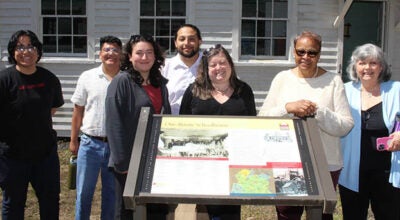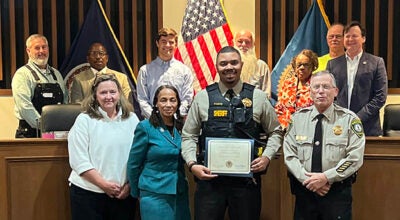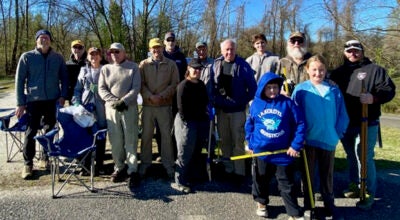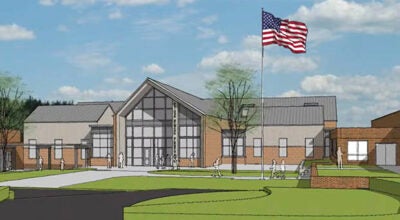Imagine Farmville — Future of transportation
Published 6:00 am Saturday, June 27, 2020
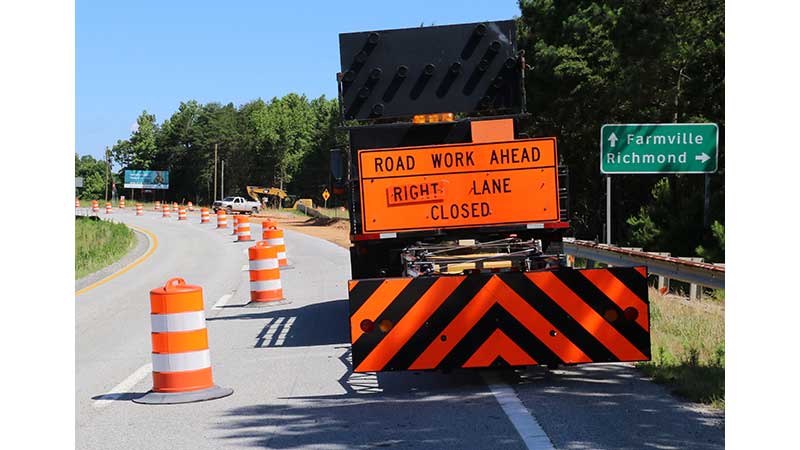
- Construction work has begun by VDOT to reconstruct the U.S. Route 460 and Route 307 intersection just outside of Farmville. (Photo by Titus Mohler)
|
Getting your Trinity Audio player ready...
|
By Emily Hollingsworth
Special to The Farmville Herald
In this edition of Imagine Farmville, The Herald looks at the current state of transportation in the region, the various ways organizations and community members are navigating the restrictions in travel, and the organizations that are helping to build the future of transportation in the county.
‘NEVER STOP(PING) SERVICES’
With the third phase of reopening the commonwealth set for July 1, traveling even across town may become more common.
Through the height of the shutdown, when elderly residents in particular were encouraged to be at home, there were organizations ensuring that elderly residents did not go without.
Centra PACE, which provides services to elderly residents in the region, has not been able to use its main building on South Main Street to host events and recreational opportunities for elderly residents.
Instead, the organization has shifted its approach in order to bring those resources to the residents’ homes.
“PACE has ‘switched gears’ from primarily transporting participants to and from the center on a daily basis to delivering needed supplies and medications to the homes,” Dawn Hicks, manager of PACE, said. “Participants still do come to the center, but on an as-needed basis to try to minimize exposure.
“There are many more services that are being provided in the participant’s homes like personal care aides, physical and occupational therapy, and even activities.”
PACE has also provided increased protections for elderly individuals who ride in PACE buses, including rearranging seating to maintain social distancing, Hicks said.
“The PACE Program will continue to follow the recommendations of the (Centers for Disease Control and Prevention),” Hicks said. “There will be a reduced number of participants on each bus and there will be deep cleaning of the buses between routes … As we start to bring in more participants, we will also have certain screenings and criteria (i.e., temperature checks, wearing masks on the buses, and discussing any symptoms before loading) that must be met in order to keep the participants as safe as possible.”
Justine Young, CEO of Piedmont Senior Resources (PSR), said the nonprofit has continued to serve its elderly neighbors, taking precautions particularly on the home delivered meals program by not allowing employees or volunteers to enter clients’ homes.
Precautions are also being taken by PSR staff, Young said.
“We had many staff working from home and staggered those in the office,” Young said. “We still social distance in the office and all are required to wear masks. We were very innovative in our teleworking in order to never stop services. PSR has not been closed at all.”
The workarounds to ensure elderly safety has also created opportunities for innovation.
“We started a creative program to supplement our meals and keep more elderly at home,” Young said. “We are now providing hot meals from local restaurants to seniors in our seven-county area.”
PSR has received more than $730,000 in federal aid through the Families First Coronavirus Act and the Coronavirus Aid, Relief, and Economic Security Act. The funding allows for greater opportunities to transport clients as it can cover the cost of fuel and put both of its transportation vehicles on the road.
TRANSPORTATION FUTURE
Transportation concerns and actions are not only taking place in the present day. Organizations are also taking steps to ensure roadway safety and improvements for the future.
The Commonwealth Regional Council (CRC) and the Virginia Department of Transportation (VDOT) have partnered to host a survey, inviting community members to give their concerns and feedback about what aspects of transportation should be implemented in the future. The online survey’s deadline was June 19.
Those who took the survey were able to rank five aspects of transportation that most needed improvements including road safety, bike/pedestrian facilities, intersection improvements, parking, expanded bus service, improve/install sidewalks or build new or expanded roads.
Participants could also mark on a map roadways that posed the greatest amounts of concern, and list why the roadways created concern.
Users could also compare their survey results with others to see how their comments or concerns aligned with others who took the survey.
The purpose of the survey was to gain community input for the region’s rural long-range transportation plan.
“The rural long-range transportation plan (RLRTP) is a planning tool used to identify transportation projects to meet the needs of the community,” Paula Jones, communications manager for the Lynchburg district said. The district includes Prince Edward County. “Once identified and public input received, the regional planning group, the Commonwealth Regional Council in this case, uses this document to prioritize projects for future funding.”
Next steps for the CRC include reviewing the survey and community input and creating a draft plan. The approval of the RLRTP is expected to be completed by fall of 2020, according to a release from the CRC.
Regarding current roadway construction in Prince Edward, Jones said, “At this time, we continue to deliver our construction, maintenance and operations programs on schedule with limited interruptions.”
BUS SYSTEM
Public transportation in the county and town have not been exempt from the challenges and adaptations that have taken place as a result of the coronavirus.
Julie Adams, transit manager for Farmville Area Bus (FAB), said the bus system and its employees are taking strict precautions to protect clients.
“Drivers are wearing masks, and of course, we are requesting all passengers to also wear some sort of face covering as well, while utilizing our services,” Adams said in an interview. “We also supply gloves and antibacterial wipes for the drivers to wipe down handrails and seats in between their shifts, which is every three hours or so. They do not wear gloves while driving because they do not have any physical contact with passengers. We have vaults on the buses for passenger fares, so drivers do not handle money and we do not make change. Any vehicle used is deep cleaned and sanitized each day after use.”
Adams said the bus capacities have also changed.
“The normal capacity is 19 passengers – we are now carrying anywhere from four to eight passengers at a time depending on whether or not passengers are from the same family/household,” Adams said. “For example, a husband and wife would choose to sit together whereas two passengers, not from the same household, would take up four bus seats instead of just two. We have every other seat taped off to allow social distancing between passengers. If drivers come to a stop and they are at their maximum capacity, we send another vehicle out to take those passengers where they need to go. We do not want anyone to be left stranded because of this. As far as our paratransit service goes, we only carry one passenger and their aide, at a time.”
FAB has experienced a decrease in passenger usage between fiscal year 2019 and fiscal year 2020.
“Our fiscal year runs from July 1 – June 30, so that is also the calendar year we use to track passenger ridership,” Adams said. “For FY 2019 we carried 172,051 passengers. So far this fiscal year, not including June 2020, we have carried 120,029 passengers.”
The numbers are separated by line, Adams said. The blue line ridership for FY 2019 was 29,999 and 25,263 for FY 2020 (excluding June 2020).
“Since early March, the only lines of service we have operating are the Blue Line, Paratransit Van Service, and our (Prince Edward County Transit) Line for the county,” Adams said.
The transportation fund has seen changes in the Farmville town budget. The transportation fund adopted during the 2019-2020 town budget was $786,233.77. The transportation fund adopted during the 2020-2021 budget, which was formally adopted June 18, was $771,943, making up approximately 3% of the total budget. Funding for the FAB comes from a combination of federal, state, and local funding, including contributions from Longwood University and bus fare among a few others, according to text from the town budget.
Looking toward the future, Adams said FAB is planning to meet with Longwood and decide how students will be transported once students return in the fall.


